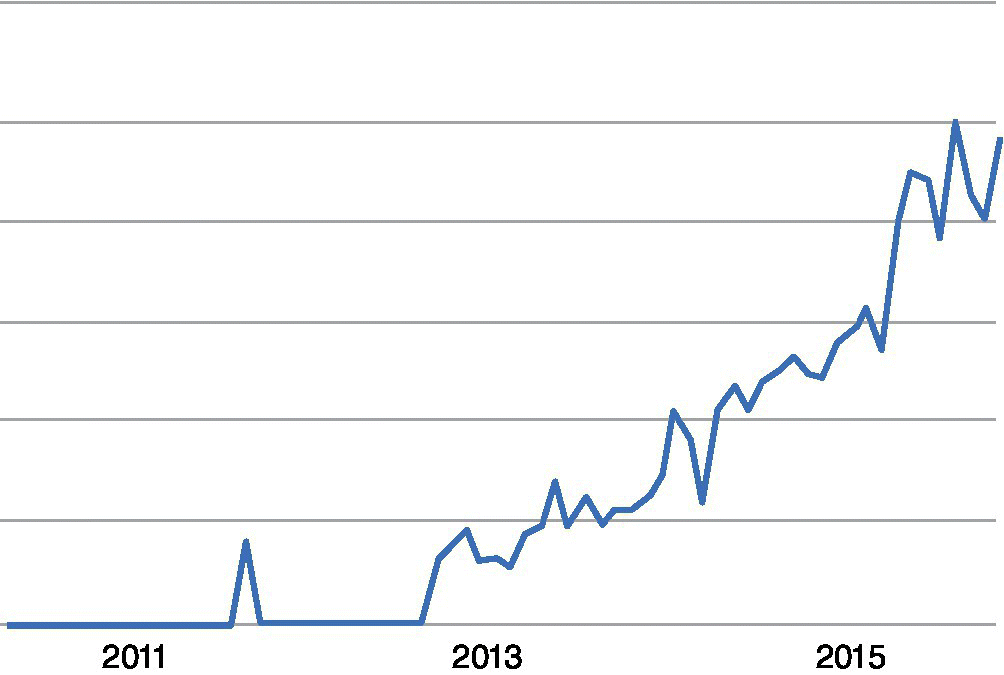13Integrating InfoQ into data science analytics programs, research methods courses, and more
13.1 Introduction
The last several years have seen an incredible growth in the number of courses and new programs in “data science,” “business analytics,” “predictive analytics,” “big data analytics,” and related titles. Let us call them “analytics,” for short. Figure 13.1, derived from Google Trends, shows the growth in popularity of the term “data science course” in search queries over time. Similar trends can be seen for “business analytics course” or, simply, “analytics course.” Different programs have a different emphasis depending on whether they are housed in a business school, a computer science department, or a cross‐departmental program. What is however common to all of them is their focus on data (structured and unstructured) and, specifically, on data analysis.

Figure 13.1 Google Trends data on “data science course.”
Source: © 2015 Google Inc, is used with permission. Google and the Google logo are registered trademarks of Google Inc.
Many statistics and operations research programs and departments have been restructuring, revising, and rebranding their courses and programs to match the high demand for people skilled in data analysis. This change represents an evolution in quantitative thinking education where emphasis is increasingly on linking academic programs to real‐world ...
Get Information Quality now with the O’Reilly learning platform.
O’Reilly members experience books, live events, courses curated by job role, and more from O’Reilly and nearly 200 top publishers.

